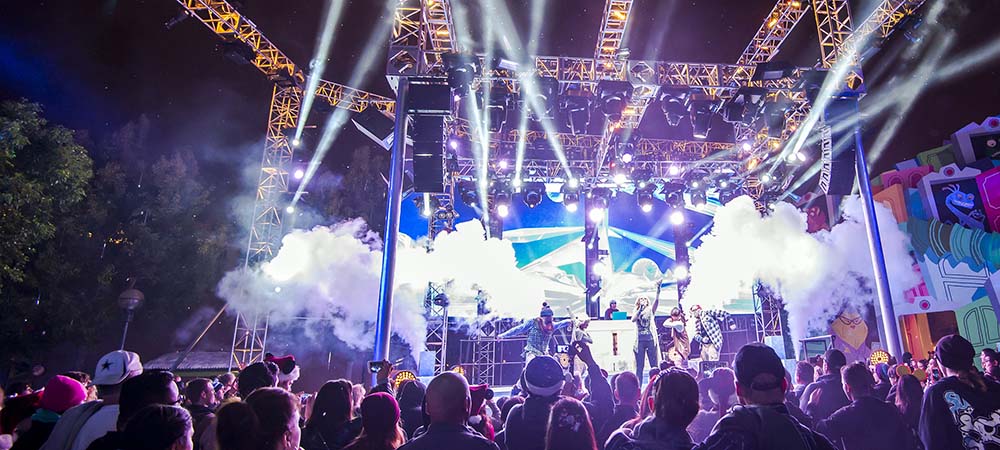
(Photo: Albert Lam/Flickr)
California is home to a quarter of the nation’s arts and culture economy, making it the country’s creativity capital. Twenty five percent of California’s creative workers call Los Angeles home. It’s an important part of the state’s economy and that’s a major reason why the Creative Economy work group is making its debut at this year’s California Economic Summit in Bakersfield.
“I am so excited that CA FWD is building a bridge between the creative industry – a key economic contributor and source of innovation – and the economic development of California. It’s long overdue,” said Arts for LA CEO Gustavo Herrera, who is the co-lead of the new Creative Economy work group with Julie Baker, executive director of Californians for the Arts.
California’s creative economy is responsible for $225 billion in economic output and 7.5% of the California gross state product (GSP). It was also one of the hardest hit sectors during the COVID-19 pandemic especially within the performing and visual arts sub-sectors. The pandemic also revealed that people of color working in this sector experienced a disproportionate share of negative economic impacts.
But even before the pandemic hit, those working in the creative economy faced affordability challenges including housing, student debt and living expenses. According to Herrera, who also serves on the CA FWD Leadership Council, the average entry level salary for arts and culture nonprofits in Los Angeles — the entry point for many in this industry in the region — is $43,437 for those who self-identify as white; $32,037 for respondents who are Black, Indigenous, People of Color (BIPOC), and Latinx respondents reported an entry-level salary below Los Angeles County’s minimum wage of $15.96 an hour. “It is no wonder that we hear from so many emerging arts leaders, particularly emerging leaders of color, that they cannot afford to work in the arts and culture field. It is going to take all of us to create a more inclusive and sustainable creative economy for all Californians.”
The creative workforce also faces another perception, that working for free or little pay is good for their “exposure.” “The next thing is that you can die from exposure,” adds Baker. “So, we need to educate, so that’s there’s a greater and deeper understanding of who is a creative economy, and then we need to invest to ensure that aspects of our economy can be stabilized, can be sustainable, so it’s not on the backs of people, but actually seen and valued as work and as labor.”
Both Baker and Herrera are hopeful SB 628, California’s Creative Workforce Act of 2021 will be included in Governor Gavin Newsom’s January 2023 budget. Sponsored by Senator Ben Allen (D-Santa Monica) and signed by Gov. Newsom, SB 628 directs the California Workforce Development Board and California Arts Council to establish an earn-and-learn program.
“Prioritizing workforce development for the creative industry with an emphasis on thriving wages and diversifying that workforce, we also see it as a really critical priority going forward, especially as we’re heading toward a recession or an economic slowdown,” said Baker. “The most important thing we can be doing is investing in jobs and workforce pipelines.”
Baker is encouraged to see the creative workforce has received relief funds through GO-Biz. She also advocates for investments in training. “One of the things that we’ve been looking at is how do we develop a creative entrepreneurship academy program through SBA around technical assistance so that creative entrepreneurs who have the capacity to contribute to economic development can access curriculum and assistance developed in a way to be more specific to the creative [entrepreneur].”
“We’re trying to build a statewide, cross-sectoral coalition that is advocating and understand that if we’re advocating for equitable economic development, that the arts are a critical aspect of that,” explained Herrera.
The Creative Workforce Working Session will tackle workforce development, arts and community development, small business and self-employment support and the creation of cross-sector partnerships that prioritize the creative economy as a leading growth sector. The session will also be creative, according to Baker. “We’re hiring Daniel French, a deejay and someone who can freestyle rhyme and create verses, to listen to the room and then put that into rhymes and raps to the beat – creating as he dubs it a ‘sonic mural.’”
“The goal is that if we can continue to organize the creative economy beyond the Summit, then next year we can come back with an even more ambitious agenda and hopefully a more integrated arts and culture community into all of these different efforts that CA FWD is leading,” said Herrera.
The California Economic Summit will be held in Bakersfield October 27-28. If you are interested in participating in the Creative Economy Workgroup session or would like to attend the Summit, you can register here.

